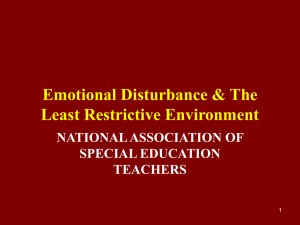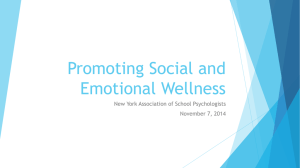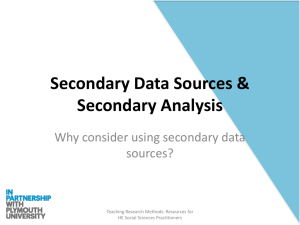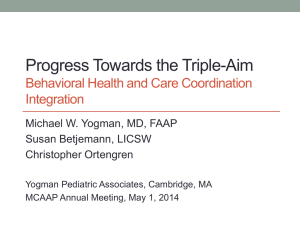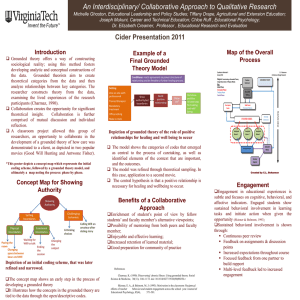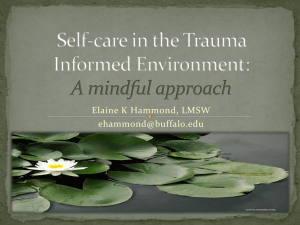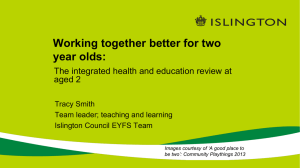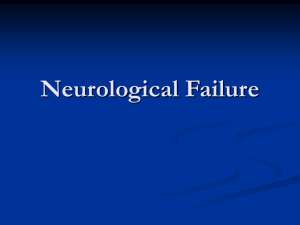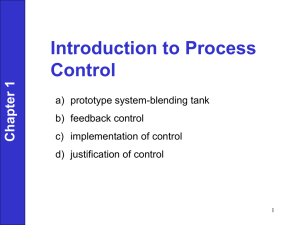Constructing New Theory to Identify Students with Emotional
advertisement
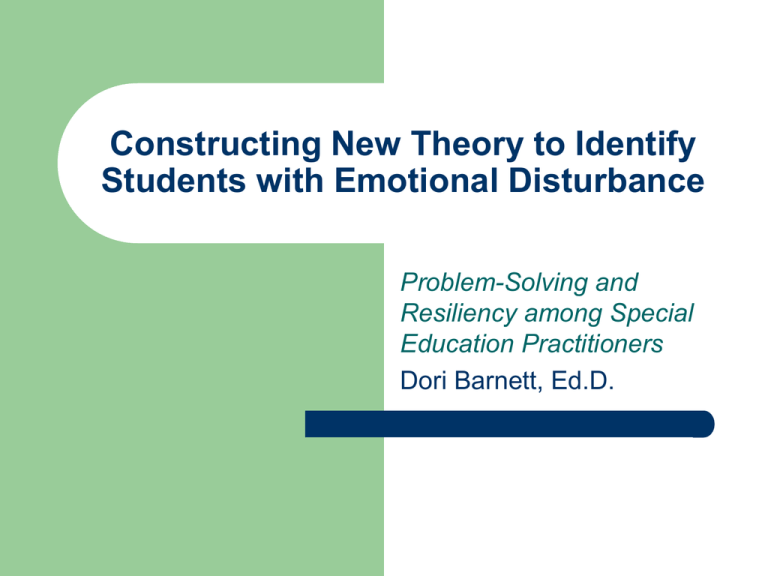
Constructing New Theory to Identify Students with Emotional Disturbance Problem-Solving and Resiliency among Special Education Practitioners Dori Barnett, Ed.D. Purpose of the Study The problem area explored by this study was how practitioners in an alternative and correctional education setting identify students with emotional and behavioral difficulties for special education services given the criteria for ED. Emotional Disturbance (ED) A condition exhibiting one or more of the following characteristics over a long period of time and to a marked degree that adversely affects educational performance-(A) An inability to learn that cannot be explained by intellectual, sensory, or health factors; (B) An inability to build or maintain satisfactory interpersonal relationships with peers and teachers; (C) Inappropriate types of behavior or feelings under normal circumstances; (D) A general pervasive mood of unhappiness or depression; or (E) A tendency to develop physical symptoms or fears associated with personal or school problems." [Code of Federal Regulations, Title 34, Section 300.7(b)(9)] As defined by the IDEA, emotional disturbance does not apply to children who are socially maladjusted, unless it is determined that they have a serious emotional disturbance. [Code of Federal Regulation, Title 34, Section 300.7(b)(9)] Context of the Study The context of the study is a county alternative education program serving students in juvenile correctional facilities, social service institutions, and community day schools. A majority of the students exhibit severe behavioral and emotional issues, such as truancy, discipline problems, trauma, and substance abuse. ACE Schools and Programs Juvenile Court Schools & Institutions Alternative and Correctional Education (ACE) . Community Programs/Schools . Reason for Referral to ACE Percent Truancy >90% Informal/Formal Probation 60% Behavior/Discipline Problem 50% School Failure >90% Social Services/Wards of the Court 15% Outcomes of the Study The outcomes of this qualitative study produced six emergent themes that comprise the grounded theory explaining the processes, actions, and interactions that practitioners used to identify students with emotional disturbance in a contemporary practice setting. Emergent Theme Three: Implementing Reflexive Identification Processes Adhering to child find processes Collaborating with other professionals Exploring the Etiology of Behavior Linking Students’ Needs to Services Practitioners implemented reflexive and collaborative identification processes: adhering to the child find process; collaborating with peers; exploring the etiology of behaviors; and linking students’ needs to available services. Literature Research based models, such as RtI, emphasize prevention and early intervention and collaborative problem solving and decision making (Gresham, 2005, 2007). Evidence-based practices (EBPs) affirm the value of participatory action, multi-disciplinary collaboration, and stakeholder involvement (Adelman & Taylor, 1998, 2010; Hoagwood & Johnson, 2003). Collaborative practices are reflected in the underpinnings of IDEA: Free and Appropriate Public Education (FAPE) and Least Restrictive Environment (LRE), the cornerstones of special education law (Kermerer, Samson, & Kermerer, 2008). Emergent Theme Four: Resolving Problems Posed by New Student Trends Increasing Severity Overlapping Disorders Substance Abuse and ED Trauma and ED Practitioners described new student trends that complicated the identification process: increasing severity and complexity of students’ behaviors; substance abuse and ED; and emotional trauma. Literature Over 50% of children exposed to trauma will develop emotional and behavioral disabilities in adolescence and adulthood (Bell & Johnson, 1995; Perry, 1996, 2006). Exposure to trauma affects brain development and leads to disorders in social, emotional and behavioral functioning (Bell & Johnson, 1995; Perry, 1996, 2006). Co-morbidity studies link emotional and behavioral disorders in children and adolescents: bipolar and conduct disorders (50%); ADHD and anxiety and depression (40%); substance abuse and depression (60%) ( (Biederman et al., 1995; Forness & Kavale, 2001; Kovacs & Pollock, 1996; Rounsaville, 2007). Conclusions and Implications The resulting GT underscores the importance of collaboration and pragmatic problem solving as key processes employed by special education practitioners involved in identifying students for special education services under the classification of ED. Provides support for collaboration and problem-solving models such as RtI and PLCs. Supports the need to broaden and align existing special education criteria to reflect current research findings. Supports the implementation of comprehensive and collaborative school-wide mental health systems. Reframes the role of the school psychologist from “gatekeeper” to “facilitator.” References Adelman, H. & Taylor, L. (2010). Mental health in schools: Engaging learners, preventing problems. Thousand Oakes, CA: Sage. Barnett, D. (2010). Constructing new theory for identifying students with emotional disturbance: A grounded theory approach (Unpublished doctoral dissertation). California State University, Fullerton, CA. Biederman J, Faraone S, & Milberger S. (1996). A prospective 4-year follow-up study of attention-deficit hyperactivity and related disorders. Arch Gen Psychiatry. 53(5), pp. 437-46. Charmaz, K. (2009). Shifting the grounds: Grounded theory in the 21st century. In J.M. Morse et al. (2009). Developing grounded theory: The second generation (pp.125-140). Walnut Creek, CA: Left Coast Press. Forness, S., & Kavale, K. (2001). Reflections on the future of prevention. Preventing School Failure, 45(2), 75-81. Gresham, F. (2005). Response to intervention: An alternative means of identifying students as emotionally disturbed. Education and Treatment of Children, 28(4), 328-344. Individuals with Disabilities Education Improvement Act of 2004, P.L. 108-446, 20 U.S.C. § 1400 et seq. Orange County Department of Education. (in press). ACCESS Truancy Recovery Program [ATRP]. [Handbook]. Costa Mesa, CA: Author. Perry, B.D. (2006). Applying principles of neurodevelopment to clinical work with maltreated and traumatized children. In Boyd, N. (Ed.) (2006). Working with traumatized youth in child welfare (pp. 27-53). New York, NY: Guildford Press.
